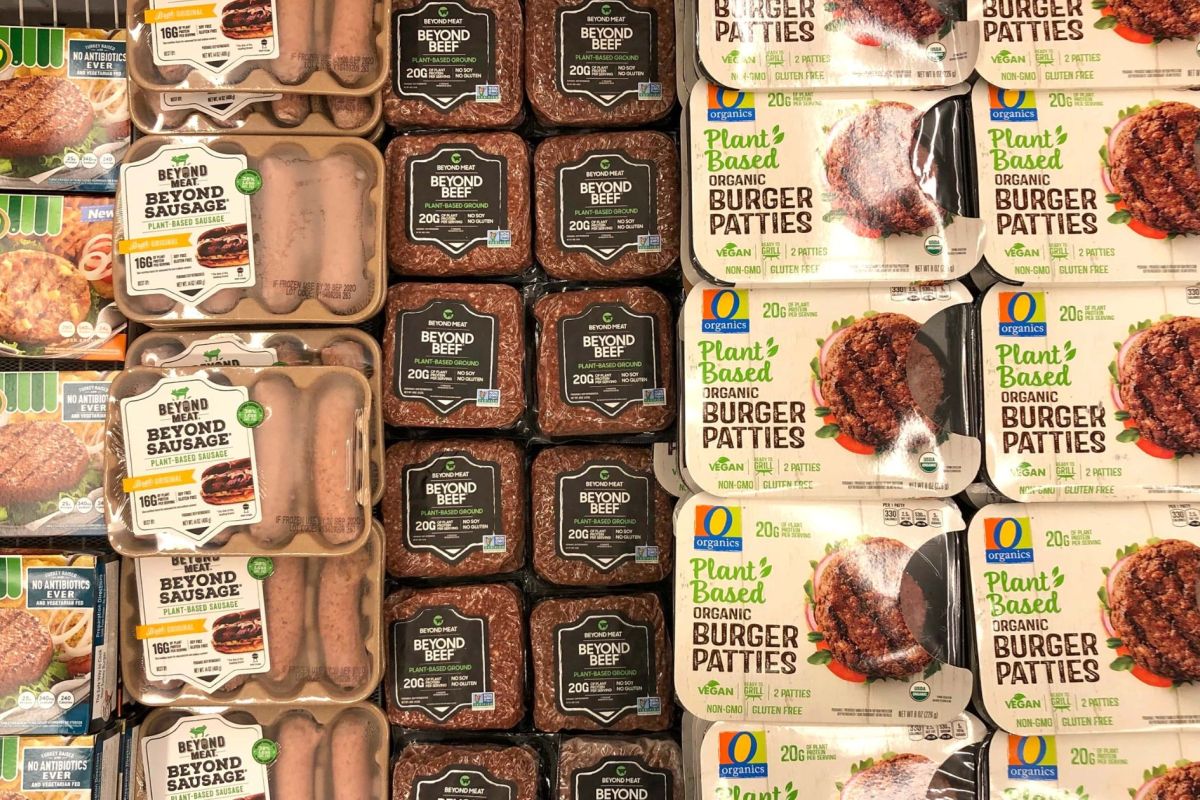
Barriers and Opportunities for Alternative Protein
Consumers know and like alternative proteins, but want improvements in taste, price, and nutritional content, according to a new report by Boston Consulting Group and Blue Horizon Corporation. The study found that the share of consumers eating only or mostly alternative proteins would double if certain barriers were overcome.
The researchers asked 3700 people in seven countries in North America, Europe, the Middle East and Asia about alternative protein. They found that consumers are open to alternatives but want better tasting and healthier products. Consumers cited taste, nutritional value, and price as the attributes that they valued the most.
“Peak Meat”
The findings suggest that the developing world might reach “peak meat” over the next couple of decades, paving the way for a more resilient, sustainable, and stable food system. The transformation is supported by investment and technological innovation, but certain barriers must be overcome if alternative protein is to reach its potential.
Anuj Maheshwari of Temesek Holdings, a contributor to the report says: “By 2035, if alternative proteins reach full parity in taste, texture, and price with conventional animal proteins, we anticipate that 11% of all the meat, seafood, eggs, and dairy eaten around the globe will be made from alternative proteins. With a push from regulators and step changes in technology, that number could reach 22%.”
However, she warns that: “It is not a given that consumers will switch to alternative proteins for the sake of climate impact, unless expectations for taste, texture, cost, and nutritional value are met.”
Global Demand
Awareness of alternative proteins amongst consumers was around 70%, with around 60% having tried the food, with 35% identifying as frequent, near-exclusive or exclusive consumers. Consumers in the UAE are the most open to alternative proteins and French consumers the most hesitant.
Chinese consumers reported high awareness and consumption. As contributor Albert Tseng of Dao Foods said: “We will not be able to prevent people in China or anywhere else from consuming more proteins. But you can convince consumers to buy the right ones. This is our task.”
Contributors Eugène Klerk and Daniel Rupli of Credit Suisse put the challenge this way: “Inhibitors differ globally: In more developed countries we need to motivate consumers to switch from traditional proteins to alternative ones. In less developed countries, we need to avoid consumers adopting traditional proteins and directly move to alternative ones.”
Healthier Choices
Improvements in the in the health aspects of products are especially important. Three-quarters of the respondents cited health as the primary motivator, and it is the top driver in all markets other than France, where it is number two. The Covid-19 pandemic accelerated the adoption of alternative proteins for health reasons, especially in China.
Health concerns and taste are the biggest barriers to consumption across all markets. Rahul Ray of Tyson Ventures, the venture capital arm of Tyson Foods, adds, “Producers need to clean up the ingredient list. Otherwise, there is a risk that consumers will step away as the products look too processed.”
Taste and Cost
When it comes purchasing decisions taste and price are key criteria. “Animal-based proteins are often understood as superior across multiple attributes,” says Lisa Sweet of the World Economic Forum. “So, in the next couple of years, if alternative proteins are able to achieve a lower price point, that could be a critical enabler to motivate consumers to switch.”
The report found that investors understand the opportunities offered by alternative protein, and that capital investment has risen at an annual rate of 124% over a two-year period from $1 billion in 2019 to $5 million in 2021. Investment is increasingly global, with increased funding from the Middle East and Asia-Pacific region.
Innovations in Manufacturing
The report also looked at innovations in ingredients, processes, and software, that are making alternative protein more palatable and viable. Notable successes include Perfect Day, Better Dairy, Nobell Foods, Moolec Science, and Change Foods using plants, yeasts, and fungi in animal-free casein to replicate the melting and stretching characteristics of cheese. Nature’s Fynd has developed new textures for meat and dairy substitutes from filamentous fungi. Fiberstar and PeelPioneers are using orange peel to replace methyl cellulose. La Vie’s proprietary processing technology helped produce a solid “fat that sizzles” in its plant-based bacon.
The report’s impact analysis shows that alternative protein is one of the best tools available to combat the climate crisis. But it concludes that if consumption of it is to grow consumer acceptance must improve. As Sir Charles Godfray of the University of Oxford puts it: “We need to keep one thing in mind: we do not eat proteins, we eat meals,”


